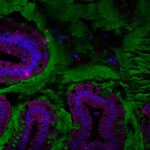Link to Pubmed [PMID] – 37247733
Link to DOI – 10.1016/j.scitotenv.2023.164436
Sci Total Environ 2023 Sep; 891(): 164436
Obesity, which is a worldwide public health issue, is associated with chronic inflammation that contribute to long-term complications, including insulin resistance, type 2 diabetes and non-alcoholic fatty liver disease. We hypothesized that obesity may also influence the sensitivity to food contaminants, such as fumonisin B1 (FB1), a mycotoxin produced mainly by the Fusarium verticillioides. FB1, a common contaminant of corn, is the most abundant and best characterized member of the fumonisins family. We investigated whether diet-induced obesity could modulate the sensitivity to oral FB1 exposure, with emphasis on gut health and hepatotoxicity. Thus, metabolic effects of FB1 were assessed in obese and non-obese male C57BL/6J mice. Mice received a high-fat diet (HFD) or normal chow diet (CHOW) for 15 weeks. Then, during the last three weeks, mice were exposed to these diets in combination or not with FB1 (10 mg/kg body weight/day) through drinking water. As expected, HFD feeding induced significant body weight gain, increased fasting glycemia, and hepatic steatosis. Combined exposure to HFD and FB1 resulted in body weight loss and a decrease in fasting blood glucose level. This co-exposition also induces gut dysbiosis, an increase in plasma FB1 level, a decrease in liver weight and hepatic steatosis. Moreover, plasma transaminase levels were significantly increased and associated with liver inflammation in HFD/FB1-treated mice. Liver gene expression analysis revealed that the combined exposure to HFD and FB1 was associated with reduced expression of genes involved in lipogenesis and increased expression of immune response and cell cycle-associated genes. These results suggest that, in the context of obesity, FB1 exposure promotes gut dysbiosis and severe liver inflammation. To our knowledge, this study provides the first example of obesity-induced hepatitis in response to a food contaminant.


